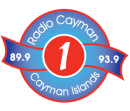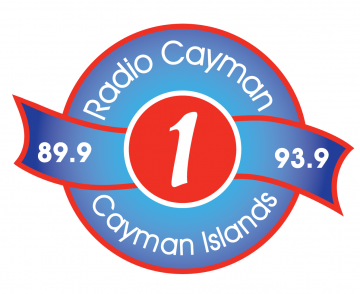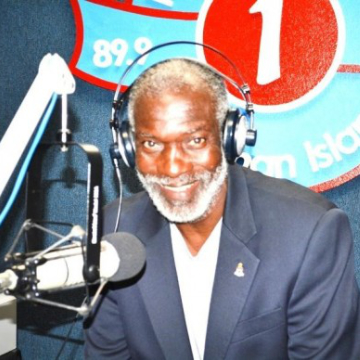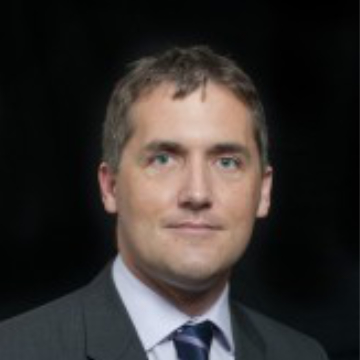News
Government Sargassum removal trial concludes
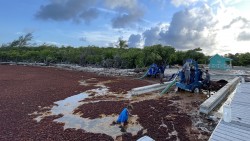
A trial to remove a large influx of Sargassum stranded in the North Side using a pumping system came to an end Monday, 1 August, after the level of seaweed decomposition made continued removal efforts impractical.
Ministry of Sustainability & Climate Resiliency Chief Officer Jennifer Ahearn said lessons learned from the trial will inform future removal efforts and a longer-term, national response plan.
“The Sargassum stranding in the North Sound is unlike any we have experienced previously in terms of its location, weather conditions and scale, demonstrating the need for scenario mapping inclusive of the private sector, which can deliver the innovations needed to manage future influx events,” Ahearn said. “The trial removed more than 2,880 square feet of seaweed and the teams on the ground learned a lot about the parameters for success using this method. Unfortunately, the seaweed has now degraded to the point where pumping it out is no longer feasible.”
The Sargassum landed in the North Sound on or around Saturday, 23 July, and, by Wednesday, the Cayman Islands Government had mobilised emergency funding to secure the services of a private contractor to undertake the seaweed removal trial. The trial began on Friday, 29 July, and continued over the weekend.
Department of Environment (DoE) Director Gina Ebanks-Petrie said the project team was hopeful the trial would be extended.
“Given the success over the weekend, we were hopeful the pumping system would continue to be effective this week and extended the closure of Garvin Park accordingly. Unfortunately, the Sargassum started to rapidly decompose, impacting the ability of the pumps to continue functioning effectively,” Ebanks-Petrie said. “We know a lot more now about what worked and what did not. Every stranding event will be unique so long-term scenario mapping and response planning will be crucial to ensuring we are better prepared for the next event.”
Following completion of the trial, Garvin Park has been reopened to the general public.
Local influxes of Sargassum are driven by a variety of external factors, including climate change, representing an emerging, long-term issue for the Cayman Islands and countries across the Caribbean region.
Premier and Minister of Sustainability & Climate Resiliency Hon. G. Wayne Panton, JP, MP, said the Cayman Islands is among many Caribbean nations dealing with larger and more frequent influxes of Sargassum.
“This is not an issue unique to the Cayman Islands and there is no ‘magic bullet’ solution for Sargassum responses. Many other countries in the Caribbean are facing similar, large-scale stranding events and we are all trying to figure out how to effectively anticipate and manage them in ways which may be appropriate to our circumstances,” Panton said. “The Government is staying abreast of the emerging research in terms of how to respond to these events, how to predict when and where they may occur, and potential end uses for any collected seaweed. We look forward to collaborating with a variety of public and private stakeholders as we develop the policies and plans necessary to address future Sargassum landing events.”
When Sargassum washes up on local beaches, leaving the seaweed on the beach to decompose is usually the simplest option. Over time, the seaweed is washed away or buried by wave action, nourishing the beach and stabilising the shoreline without the risk of sand removal associated with beach grooming. During turtle nesting season, which runs from May to November, it is important to ensure any efforts to remove Sargassum from local beaches do not negatively impact turtle nests.
The DoE has access to NOAA’s predictive Sargassum model and has worked to develop informational materials to help landowners determine when action is needed to address stranded Sargassum and when it is best to let nature take its course.
To access these materials or complete the seaweed removal enquiry form, please visit the DoE website: www.doe.ky
